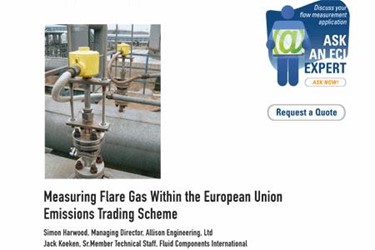Measuring Flare Gas Within The European Union Emissions Trading Scheme
By Simon Harwood, Managing Director, Allison Engineering, Ltd. And Jack Koeken, Sr.Member Technical Staff, Fluid Components International

Flare gas is the name given to the surplus waste gas produced during the extraction of crude oil and the subsequent refining process. It is typically vented to atmosphere and burned in a flare stack. The process inevitably releases large quantities of carbon dioxide (C02) to the atmosphere, which is a major contributor to global warming.
Prior to the European Union Emissions Trading Scheme, the measurement of flare gas on oil and gas production facilities in the North Sea was driven mainly by statutory regulations that required operators to simply report emissions to the Environment Agency. Consequently, there was never an economic incentive to install metering equipment.
The Emissions Trading Scheme (ETS) was introduced in 2005 by the European Union as a part of its climate change policy and is about to begin its third trading period, which will run from 2013 to 2030.
Get unlimited access to:
Enter your credentials below to log in. Not yet a member of Water Online? Subscribe today.
